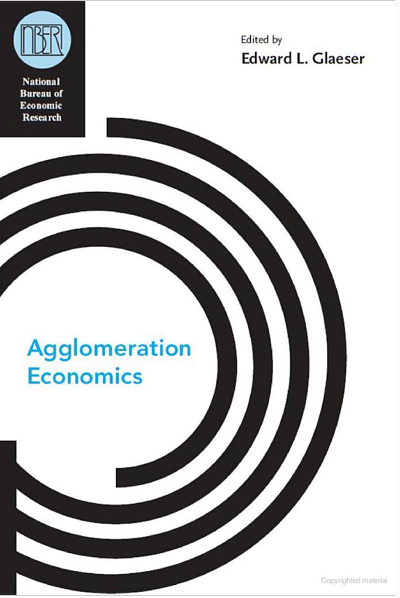I’m a big fan of the work of Harvard Economics Professor Edward Glaeser‘s work, especially that related to Manhattan. This week we are hit broadside with two compelling pieces to read.
The first is yesterday’s Cities Do It Better article in the NYT Economix section where he asks the question:
>What makes dense megacities like New York so successful?
Economic geography was one of my favorite courses in college because it was so applicable to understanding the logic of how a city evolved and operated. Access to natural resources, transportion, labor, etc. He references Jed Kolko’s essay in “Agglomeration Economics” that he edited.
A key point as far as I’m concerned:
>In a multi-industry city, like New York, workers could readily find some other employer. The young Chester Carlson was laid off from Bell Labs during the Great Depression, then moved to a law office as a patent clerk and then joined the electronics company that would make Duracell batteries and then invented the Xerox copier.
It’s sort of like my assumption that it is much more likely you will run into someone you know from another state or went to high school with in Manhattan than you would if you lived a mid-sized city. High density brings opportunity.
But there is more risk in cities like Detroit whose economy has always been one-dimensional. Pittsburgh and Houston are examples of smaller cities that learned to diversify after hovering near insolvency in prior decades.
His second article was released in City Journal called Preservation Follies which warns against excessive landmarking which serves to make Manhattan less affordable. He’s not anti-preservation, but he makes a case for excessive landmarking which has including buildings that don’t deserve it. His approach was novel to me, in the way that he tracks acres as the metric of landmarking:
He also looks at the addition of housing units within landmark districts:
>During the 1980s, the mostly historic tracts added an average of 48 housing units apiece—noticeably fewer than the 280 units added in the partly historic tracts and the 258 units added in the nonhistoric tracts. In the 1990s, the mostly historic tracts lost an average of 94 housing units (thanks to unit consolidation or conversion to other uses), while the partly historic tracts lost an average of 46 units and the nonhistoric tracts added an average of 89 units.
…and its impact on housing prices…
>From 1980 through 1991, the average price of a midsize condominium (between 800 and 1,200 square feet) sold in a historic district was $494,043 in today’s dollars. From 1991 through 2002, that price was $582,671—an 18 percent increase. The average price of a midsize condo outside a historic district, meanwhile, barely rose in real dollars, from $581,865 in the first decade to just $583,352 in the second.
One Comment
Comments are closed.



Professor Glaeser nails it, once again. I believe his words are simply elegant, mostly because he says things I already agree with.